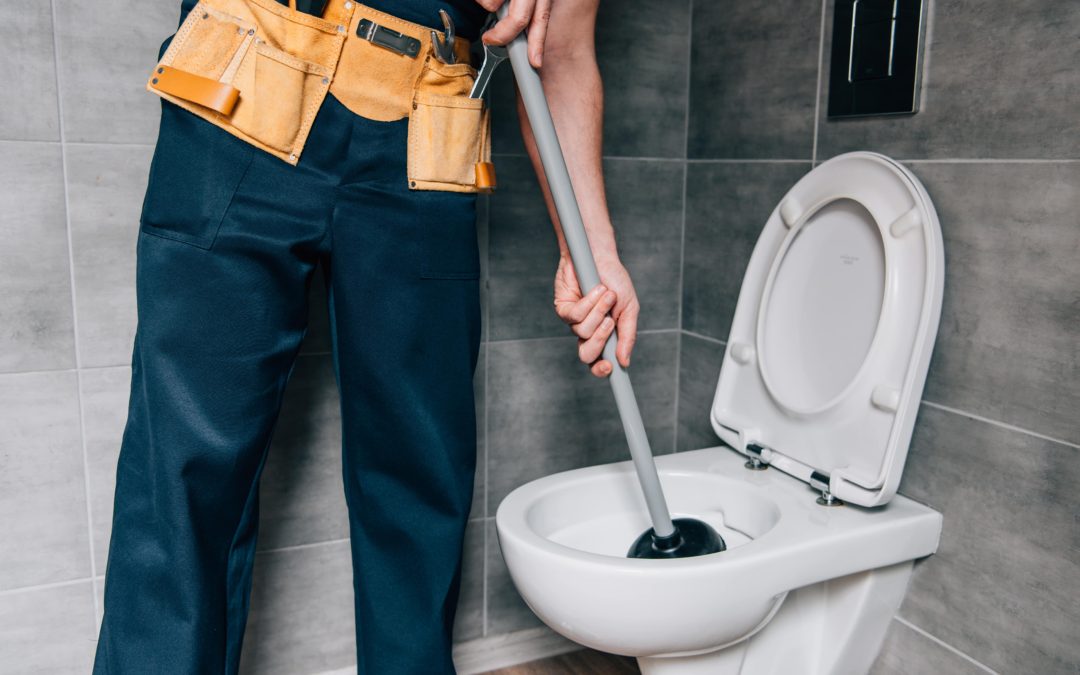Learn How to Easily Unclog Your Toilet
A Must-Have Guide to the Most Essential Home Plumbing Tool
Do you have a plunger tucked in the corner beside your toilet? Or maybe hidden in the closet somewhere?
It’s often the only and best tool you have on hand for unclogging your toilets. But, if you’re using it wrong you could just be splashing around.
Effective plunger usage can make all the difference in a quick fix versus a call to your local plumber.
You can use it when your toilet isn’t flushing, sink isn’t draining or water won’t leave your bathtub.
How Plungers Unclog Your Toilet
The cup of your plunger is used to create a seal over the drain opening in the bottom of your toilet bowl. The cup creates a suction that’s key to getting your toilet flushing again.
Once you start pushing and pulling the handle of your plunger, the pressure should free up your drain. For best results, try doing vertical movements with the handle for at least 20 seconds.
This method ups the pressure inside of your pipes and sends water downwards. Once you pull back up the water rises with the plunger cup. This back and forth motion eventually dislodges what is blocking your pipes.
The Anatomy of Your Plunger
Did you know that familiar looking red rubber plunger really isn’t for your toilets? If your plunger has a flat bottom, it’s best for unclogging flat surfaces like sinks and shower drains.
Your toilet plunger should have the main cup shape as well as a flange that sticks out from the bottom. This flange is a rubber flap that helps fit your plunger better to the toilet drain.
If you want to take your plunger to the next level, you can try an accordion plunger. This plastic plunger has layers to it that makes suctioning easier. It gives you a more powerful tool for unclogging your drain line.
Step-By-Step Toilet Unclogging Guide
Next time your toilet is backed up, follow these steps for an easy and effective declogging:
- Protect yourself and your bathroom from any mess
- Adjust the water level in your toilet so it covers the plunger but doesn’t risk an overflow
- Insert your plunger at a 45 degree angle and create a seal with the hole at the bottom
- Plunge up and down until the water level goes down
- Take out the plunger and see if the object has moved
- Flush the toilet
- Disinfect your plunger and let it dry
- Put your plunger away somewhere convenient for future use
What If I Don’t Have a Plunger?
Buy one. Seriously, it is a cheap fix to a pretty big problem. But if you’re in a panic and need a quick fix, there are a few alternative options to using a plunger.
- Try using hot water to loosen the clog and get your water flowing properly again. The water should be hot but not boiling because it could crack your porcelain.
- Use grease-cutting dish soap to help break up whatever is clogging your toilet.
- Break up the solids blocking your toilet drainage with tools such as a piece of metal wire, your toilet brush or a ruler. For easiest cleanup, just use something you are okay with throwing away after you’re done unclogging the toilet.
- You can try mixing vinegar and baking soda together in your toilet bowl to break up the clog. Just like a science fair volcano, there will be fizzing and foam so make sure your water level isn’t too high.
If nothing works and your toilet is seemingly doomed to never flush again, call a professional plumber. Mike Wilson Plumbing handles plumbing emergencies in Chesterfield and Richmond, VA. If you ever have a clogged toilet that just can’t unclog, you should contact us right away.

